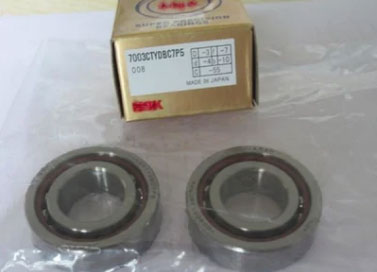Home / News / The Importance of Spindle Bearing Lubrication and Best Practices
The Importance of Spindle Bearing Lubrication and Best Practices
Introduction
Spindle bearing lubrication plays a critical role in maintaining the performance, efficiency, and longevity of various types of machinery, such as CNC machines, milling machines, and lathes. Proper lubrication minimizes friction, reduces wear and heat generation, and prevents the ingress of contaminants. This article will explore the importance of spindle bearing lubrication, various lubrication methods, and best practices to ensure optimal performance and extended service life.

The Importance of Spindle Bearing Lubrication
Reduced Friction and Wear
Lubrication forms a thin film between the rolling elements and raceways of spindle bearings, reducing friction and wear. This results in smoother operation, increased bearing life, and reduced maintenance costs associated with bearing replacement.
Heat Dissipation
Proper lubrication helps dissipate heat generated during operation, maintaining the temperature of the spindle within acceptable limits. This prevents thermal expansion, ensuring dimensional stability and accuracy of the workpiece.
Contamination Prevention
Lubrication acts as a barrier to contaminants, such as dust and debris, which can cause premature bearing wear and failure. Proper lubrication also helps flush out any contaminants that may enter the bearing during operation.
Corrosion Protection
Lubricants provide a protective layer on the bearing surfaces, preventing corrosion and extending the service life of the bearing.
Spindle Bearing Lubrication Methods
There are two primary methods of lubricating spindle bearings:
Grease Lubrication
Grease is a semi-solid lubricant that consists of a base oil, thickening agent, and additives. Grease-lubricated bearings require less frequent maintenance and are suitable for applications where the spindle operates at moderate speeds and temperatures. However, grease lubrication may not be ideal for high-speed or high-temperature applications, as it can cause excessive heat generation and reduced bearing life.
Oil Lubrication
Oil lubrication is more suitable for high-speed and high-temperature applications, as it provides better heat dissipation and lubrication properties compared to grease. Oil-lubricated bearings can be further classified into two types: oil bath and oil mist (or air-oil) lubrication. Oil bath lubrication involves submerging the bearing in a reservoir of oil, while oil mist lubrication delivers a fine spray of oil mixed with compressed air to the bearing.
Best Practices for Spindle Bearing Lubrication
Selecting the Right Lubricant
Choose the appropriate lubricant based on the bearing type, operating conditions, and manufacturer's recommendations. Consider factors such as viscosity, temperature range, and compatibility with materials used in the bearing and machine components.
Maintaining Proper Lubricant Levels
Ensure that the lubricant is maintained at the recommended level, as insufficient lubrication can lead to increased friction, wear, and bearing failure. Conversely, over-lubrication can cause excessive heat generation and reduced bearing life.
Regular Inspections and Maintenance
Inspect spindle bearings regularly for signs of wear, contamination, and proper lubrication. Follow the manufacturer's guidelines for lubrication intervals and maintenance schedules to ensure optimal performance and extended bearing life.
Proper Storage and Handling
Store lubricants in a clean, cool, and dry environment to prevent contamination and degradation. Handle lubricants with care, using clean tools and containers to avoid introducing contaminants.
Conclusion
Spindle bearing lubrication is essential for maintaining the performance, efficiency, and longevity of your machinery. By understanding the importance of lubrication, selecting the appropriate lubrication method, and following best practices, you can optimize the performance of your spindle bearings and extend their service life.
- Previous: Ceramic Spindle Bearings: Advantages and Applications in Advanced Machinery
- Next: Spindle Bearing Preload: Significance, Methods, and Considerations













